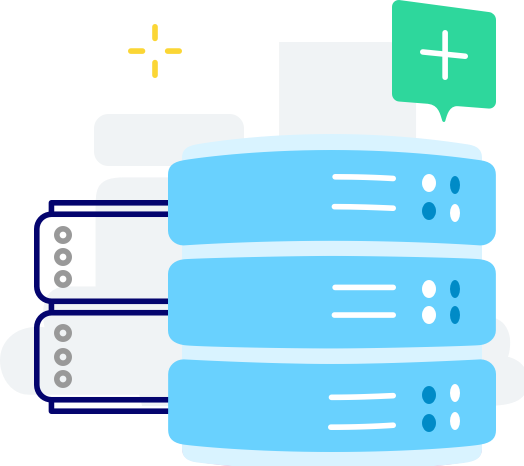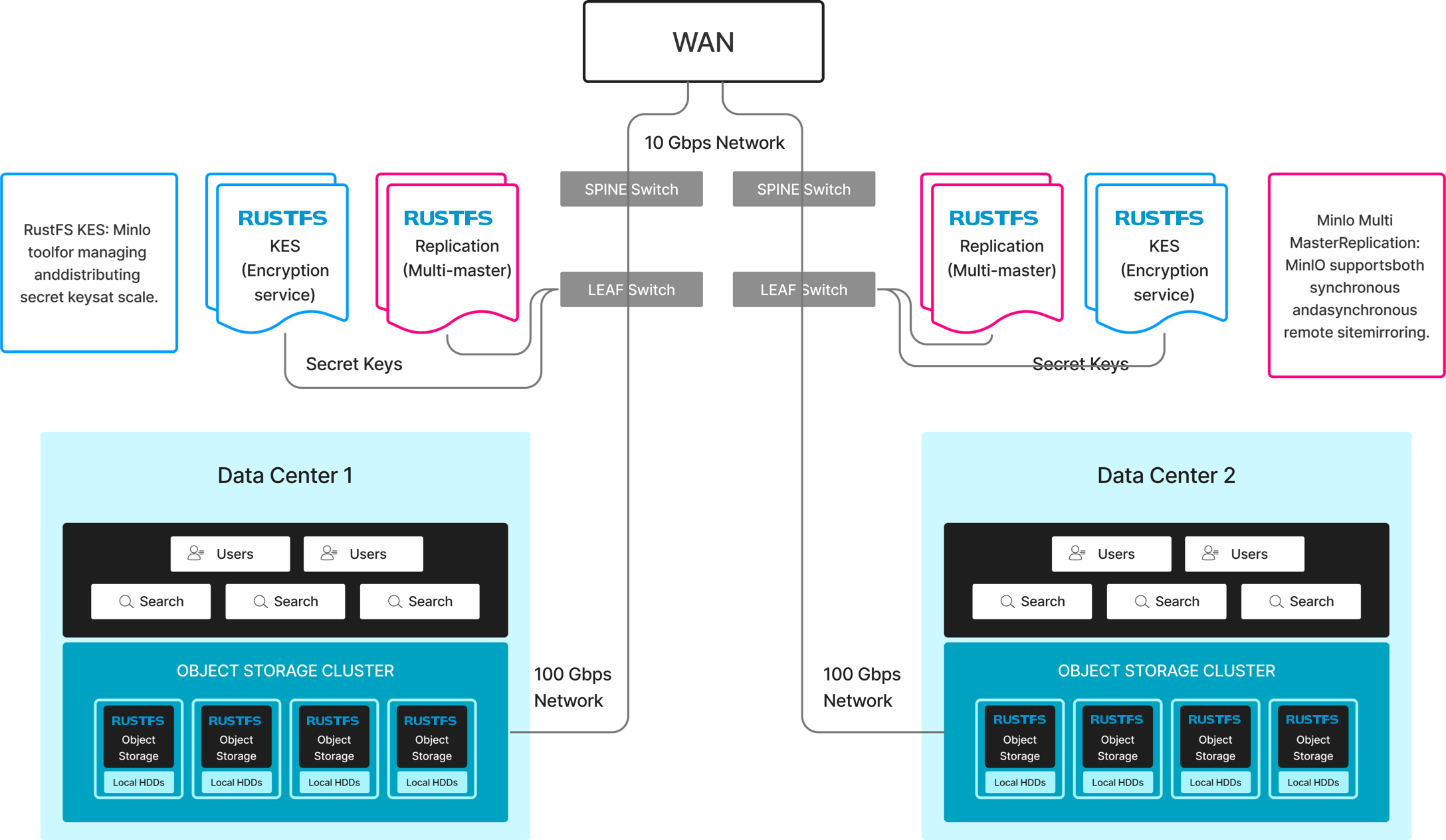Multi-Site, Active-Active Replication for Object Storage
Active Replication for Object Storage

Active replication for object storage is a critical requirement for mission-critical production environments. RustFS is currently the only vendor providing this service. Executed at bucket-level granularity, it's used in the following situations:
RustFS supports synchronous and near-synchronous replication, depending on architectural choices and data change rates. In each of the above cases, replication must be as close to strictly consistent as possible (considering bandwidth considerations and change rates).
RustFS Data Replication Designed for Large-Scale Resilience
Key features include:
- ✅ Encrypted or unencrypted objects and their associated metadata (written atomically with objects)
- ✅ Object versions
- ✅ Object tags (if any)
- ✅ S3 object lock retention information (if any)
Core Features
Ability for Source and Target Buckets to Have the Same Name
This is required for applications that must transparently failover to remote sites without any interruption.
Native Support for Automatic Object Lock/Retention Replication Across Source and Target
Ensures data integrity and compliance requirements are maintained during replication.
Near-Synchronous Replication
Can update objects immediately after any mutation occurs in the bucket. RustFS follows strict consistency within data centers and eventual consistency between data centers to protect data.
Notification Functionality
Notification functionality for pushing replication failure events. Applications can subscribe to these events and alert operations teams.
Considerations When Implementing RustFS Active-Active Replication
At the most basic level, any design needs to consider infrastructure, bandwidth, latency, resilience, and scale. Let's examine them in order:
Infrastructure
RustFS recommends using the same hardware at both ends of the replication endpoints. While similar hardware can work, introducing heterogeneous hardware profiles brings complexity and slows problem identification.
Bandwidth
Bandwidth is a critical factor in keeping two sites consistently synchronized. The optimal bandwidth requirement between sites is determined by the rate of incoming data. Specifically, if bandwidth is insufficient to handle peaks, changes will queue to the remote site and eventually synchronize.
Latency
After bandwidth, latency is the most important consideration when designing an active-active model. Latency represents the round-trip time (RTT) between two RustFS clusters. The goal is to reduce latency to the smallest possible number within the budget constraints imposed by bandwidth. RustFS recommends RTT thresholds not exceeding 20 milliseconds for Ethernet links and networks, with packet loss rates not exceeding 0.01%.
Architecture
Currently, RustFS only recommends replication across two data centers. Replication across multiple data centers is possible, however, the complexity involved and the trade-offs required make this quite difficult.
Large-Scale Deployment Architecture
RustFS supports very large deployments in each data center, including source and target, with the above considerations determining scale.

Frequently Asked Questions
What happens when the replication target fails?
If the target goes down, the source will cache changes and begin synchronizing after the replication target recovers. There may be some delay in reaching full synchronization, depending on the duration, number of changes, bandwidth, and latency.
What are the parameters for immutability?
Immutability is supported. Key concepts can be found in this article. In active-active replication mode, immutability can only be guaranteed when objects are versioned. Versioning cannot be disabled on the source. If versioning is suspended on the target, RustFS will begin failing replication.
What other impacts are there if versioning is suspended or there's a mismatch?
In these cases, replication may fail. For example, if you try to disable versioning on the source bucket, an error will be returned. You must first remove the replication configuration before you can disable versioning on the source bucket. Additionally, if versioning is disabled on the target bucket, replication will fail.
How is it handled if object locking is not enabled on both ends?
Object locking must be enabled on both source and target. There's an edge case where after setting up bucket replication, the target bucket can be deleted and recreated but without object locking enabled, and replication may fail. If object locking settings are not configured on both ends, inconsistent situations may occur. In this case, RustFS will fail silently.